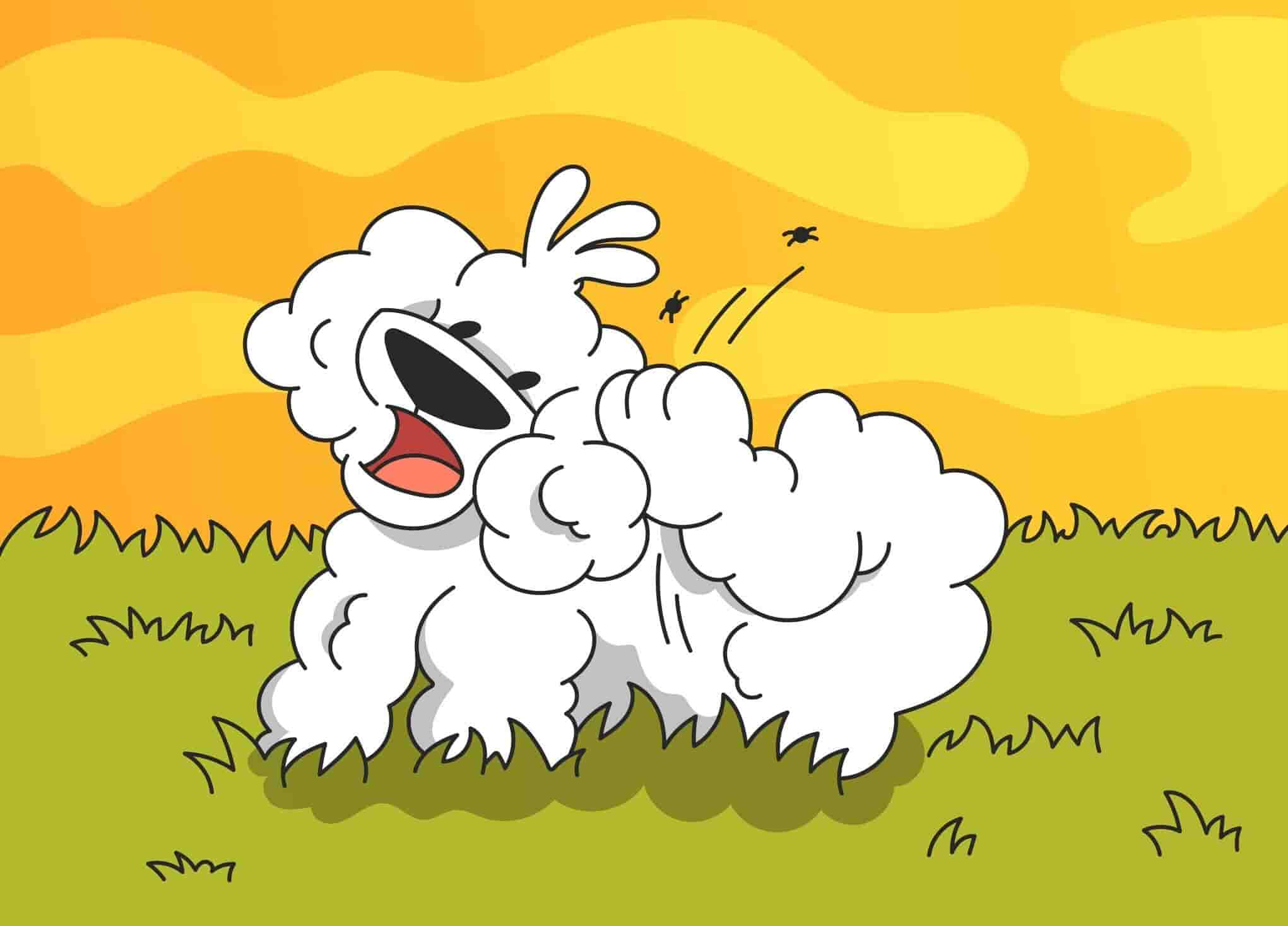Among the things that dogs may be susceptible to, especially when part of their daily routine is going outside, is being exposed to certain skin and blood-loving parasites such as lice. And like other creepy crawlers, when we happen to spot them crawling on our dog, we might wonder how it would affect our beloved pet.
While we, dog parents, might worry, there is no need to panic. What we can do when we see one or several of these suckers on our dog is to find ways to address and eliminate them without causing further irritation and possible complications to our dog's health. Like other parasites, lice may bring an array of diseases so it's best to remove them from your dog as early on as possible.
This article was reviewed by Dr. Chris Vanderhoof (DMV).
What Are Dog Lice?
First things first, it helps dog parents to learn how to identify lice as a first step in determining how to remove them from your dog. Questions such as: "What do dog lice look like?" are essential for dog owners.
Dog lice or lice are tiny, six-legged, flat, and wingless insects that may breed in the feathers and hair of birds and mammals. The type of lice you see on your dog would depend on your dog's hair shaft. This is due to the fact that the claws of a louse are specific to the animal that they latch to. To survive, they live off debris from skin, sebum, and blood from their host species.
Below are the two types of lice you can find on your dog:
Chewing lice
These types of lice that live off the debris from skin and body secretions may be identified with their flat and round heads. Specifically, there are two species of chewing lice that may latch on dogs and canids. One is the Trichodectes canis, which can be found around the world and normally resides on its host for a span of 30 days.
Meanwhile, the other one is the Heterodoxus spiniger, which is mostly found in tropical areas. While it's rare to find it in dogs across Northern America, it has been seen in wild canids such as the grey wolf, coyotes, and red fox.
Sucking lice
This type of lice is known for sucking blood to be able to live. The sucking lice that have been known to affect dogs is the Linognathus setosus. In contrast to the chewing lice, this type of lice has pointed mouths and is widely found in the tropical as well as subtropical regions in North and South America, Africa, Asia, and India.
How to Tell if Your Dog Has Lice
To check if your dog has lice, part your dog's hair and check their hair shaft. Adult lice are big enough to be seen with your naked eye, being more or less 2-4mm or around the size of a sesame seed.
Dog lice vs. fleas
While it may be easy to mistake lice for fleas at the first look, there are distinct differences as well as some similarities.
Appearance
Fleas have a dark, almost black hue, while lice have a color profile of yellow, tan, or medium brown.
Movement
It depends on the type of lice. Chewing lice are more known to move compared to the sucking lice that latches on the host's skin to suck blood, similar to the way ticks do. If you feel that your dog may be infested with dog lice, examine your dog's fur. You may also use a flea comb to do this.
Apart from mistaking lice for fleas, lice eggs may also be mistaken for dandruff. One way to identify is to remove a bit of hair from your dog. If white flakes begin to fall, then you'll know that it's dandruff. On the other hand, if it doesn't fall off even after shaking, it's probably lice.
Read more: Dogs and Ticks: How to Treat Tick Bites
Other signs to look out for:
- A dry, rough, and matted coat;
- Tiny wounds;
- Bacterial infections;
- Itchiness and repeated scratching;
- Loss of hair in areas around the neck, ears, groin, and rectal areas;
- Restless behavior;
- Anemia in puppies and small dogs, and in severe cases tapeworms as well as other bacteria that they might have gotten from lice.
How and where can dogs get lice?
Lice aren't able to move fast. While they may crawl, they don't have the ability to jump, skip, or fly. So how and where can your dog get lice? This is usually transmitted after direct contact with another infested dog or animal.
Apart from this, they may spread from dog collars, grooming supplies, infested bedding, etc. The threat may also be in the places where a lot of dogs gather, such as dog shows, daycare centers, pet boarding hotels, and parks.
How to Get Rid of Dog Lice
There are many flea and tick prevention treatments that help a lot in avoiding lice infestations in dogs, especially those in secure and loving homes. On the other hand, infestations may be more common in strays, ferals, as well as old or sick dogs.
Treatment and Prevention
-
Clipping your dog's matted hair in severe lice infestations
It's common for lice to latch on to the animal's fur and can be hard to remove. Clipping it will help remove the lice from your dog. -
Flea combs
This may help in removing lice (whether dead or alive) in the remaining hair after clipping on the matted hair. After use, research says it's best to submerge the comb in tick/flea shampoos or pet-safe insecticides. -
Pet-safe Insecticide treatments
This is another option for eliminating lice infestations, and would often need several sessions before being completed. Remember that the product you will use should be pet-friendly and non-toxic so it can be safe for your dog. -
Cleaning of beddings and places often frequented by your dog.
FAQ
Can dogs get lice from humans?
No. Because lice are host-specific, they won't change their host if ever they happen to land on your dog for example. The same goes for us, humans.
Can dog lice live on humans?
No. Dog lice prefer dogs and other wild canids, so if dog lice happen to get to you, it won't lead to an infestation.
Can dogs get head lice?
No. Head lice is considered as a type of species named Pediculus humanus capitis that can only affect humans.
Can I use lice shampoo on my dog?
It depends. There are dog shampoos that are specifically used to help prevent and/or treat fleas, ticks, and other parasites such as lice. However, it is important to choose one that is dog-friendly (cat-friendly too if you have a cat in the same household). Meanwhile, it's best to consult with a veterinarian first to make sure that the specific product is safe for your dog.
Online Vet & Emergency Fund
In cases when your pet's general health is in focus, an online vet service would be quite handy. So how does an online vet service benefit you in times when your dog has dog lice?
Let's take Petcube's Online Vet service. The service allows you to have access to a licensed veterinarian 24/7, allowing you to ask unlimited questions about dog lice and how it might affect your dog.
With Online Vet, you may chat, call, and send photos (or videos!) in order for the veterinarian to be able to examine your pet's situation. You may also discuss preventative measures and once confirmed that your dog has lice, you can ask for recommendations as to which products to use to treat your dog.
Another service that would greatly benefit your dog is an emergency fund. Having an emergency fund gives you the assurance of funds whenever your dog would suddenly need it in the future.
Petcube's Emergency Fund helps you meet the most common emergency needs at an affordable rate. Not to mention, it gives you access to an online vet service so you can consult with a veterinarian whenever and wherever.

Was this article helpful?
Help us make our articles even better










